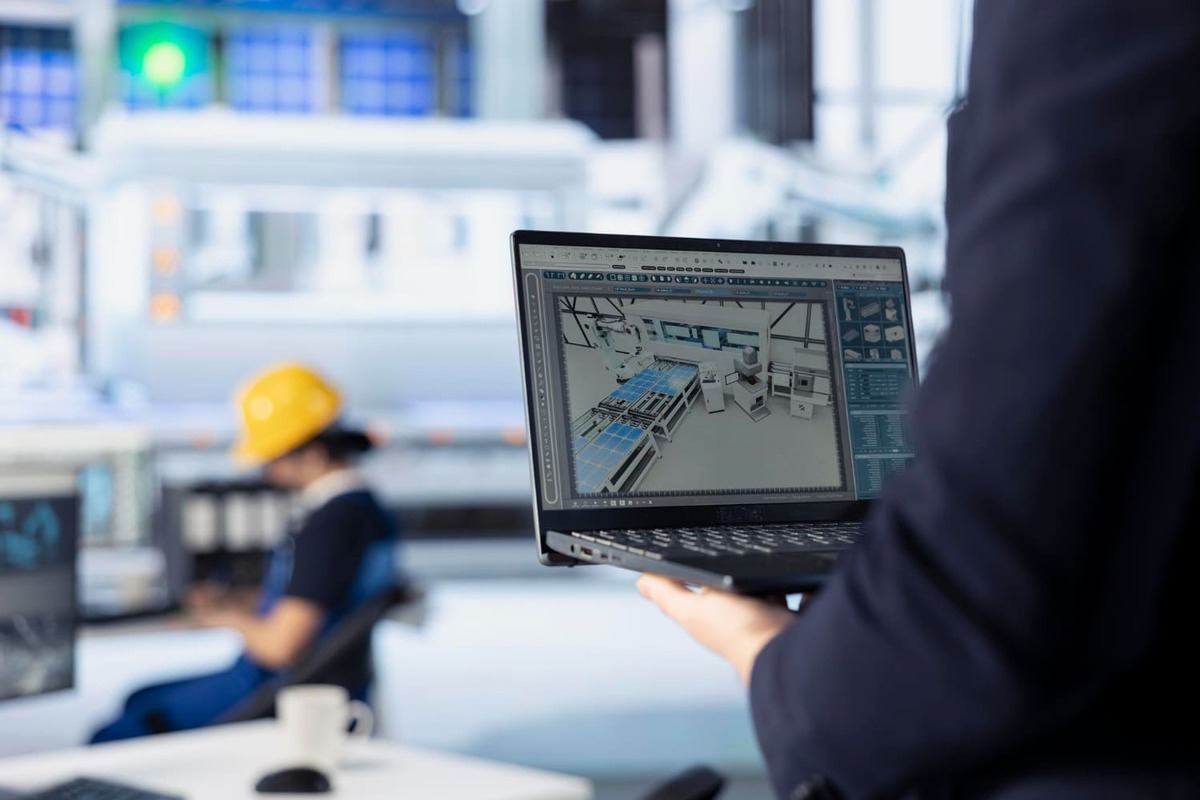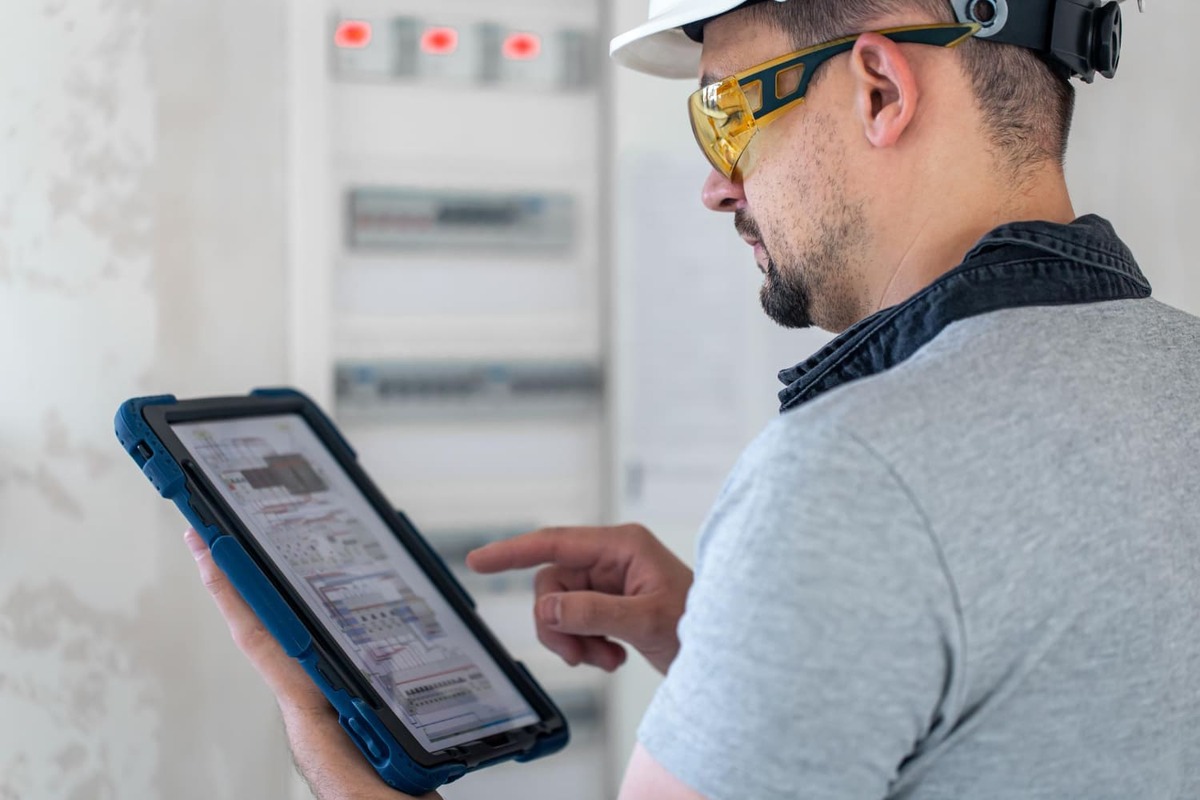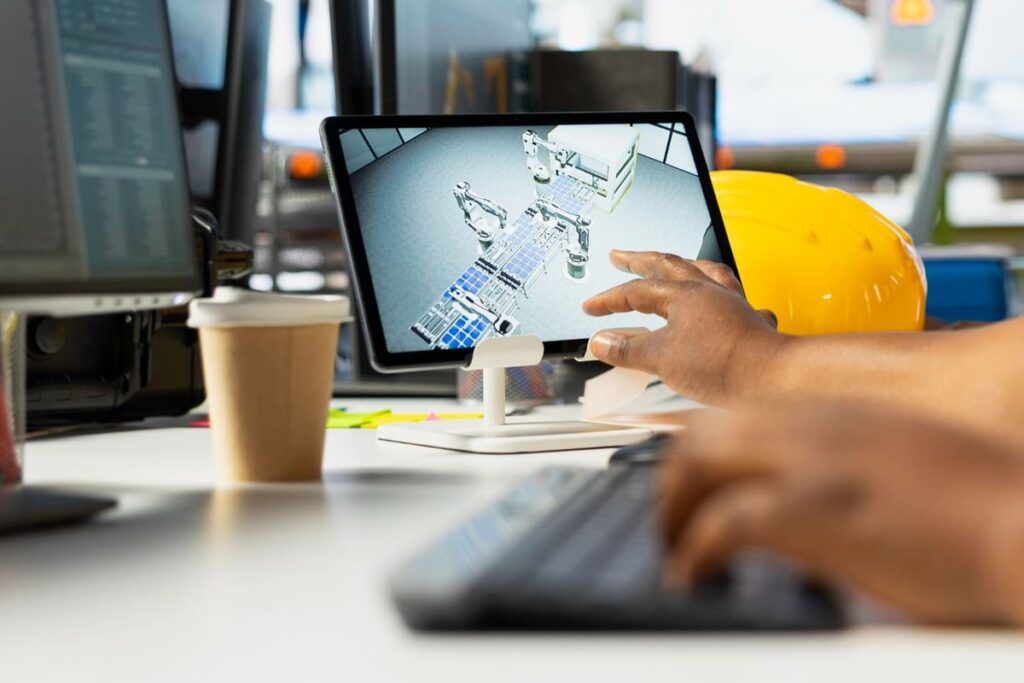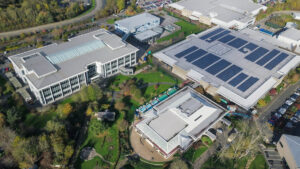The construction industry, traditionally characterized by its slow adoption of technological advancements, is currently undergoing a profound transformation. This shift is critical for addressing persistent challenges such as stagnant productivity, evolving safety standards, and the increasing global demand for sustainable practices. Modern construction, often conceptualized as “smart construction,” fundamentally redefines building design, execution, and operation by integrating digital technologies and industrialized manufacturing techniques.
This holistic approach aims to significantly enhance efficiency, minimize whole-life costs, and improve overall sustainability across projects. At the heart of this modernization lies sensor technology, which acts as the crucial digital nervous system of a construction project. These devices are instrumental in collecting and transmitting real-time data through the Internet of Things (IoT), providing unprecedented levels of visibility and control.
This technical article explores the pivotal role of innovative sensor startup companies in reshaping the future of construction monitoring. It delves into how these specialized firms are developing and deploying advanced sensor solutions to provide granular data and actionable intelligence across various construction processes. From meticulous site condition assessments and optimized material management to enhanced worker safety protocols and long-term structural health monitoring, these technologies are driving a paradigm shift.
This report offers a didactic overview for industry professionals, illustrating the practical applications and real-world impact of these transformative sensor solutions. The current acceleration in sensor adoption is not merely a consequence of new technologies becoming available; it is driven by a confluence of external pressures, including stringent sustainability mandates, client demands for real-time project transparency, intense cost pressures, and evolving safety regulations.
These factors collectively underscore the critical necessity for modernization within the sector. Consequently, sensor technology is not merely a tool but a foundational enabler of the broader digital transformation, allowing for the realization of “smart construction” principles that were previously theoretical.
Table of Contents
The Transformative Power of Sensor Technology in Construction
Sensor technology is fundamentally altering traditional construction methodologies by providing real-time data and actionable insights across various operational domains. This crucial shift from reactive problem-solving to proactive management is leading to significant improvements in efficiency, safety, quality, and cost control across the construction lifecycle.
1. Enhancing Site Conditions and Environmental Monitoring
The immediate environment of a construction site presents numerous variables that can significantly impact project progress, material integrity, and worker well-being. Sensor technology provides continuous oversight, enabling precise control over these dynamic conditions. This represents a fundamental shift in operational philosophy, moving from merely reacting to issues to implementing preventative strategies, thereby reducing costs and improving safety.
Real-time Data for Critical Insights
Wi-Fi-connected sensors deliver crucial information on site conditions, directly contributing to enhanced safety and productivity. This includes monitoring humidity and other weather factors that could affect building materials, construction methods, or worker safety. Automated sensor monitoring eliminates the need for manual inspections, with real-time data streamed to dashboards for immediate decision-making and reporting. The ability to collect and analyze this data in real time allows project managers to anticipate potential problems rather than merely respond to them. For example, if a sudden change in humidity is detected that could compromise concrete curing, immediate adjustments can be made to protect the material, preventing costly rework and delays.

Advanced Gas and Air Quality Detection
Moving beyond traditional methods, modern sensor technology offers advanced and effective detection of gas leaks and other chemical issues often undetectable by human senses. Air quality sensors continuously monitor levels of dust, particulate matter, and volatile organic compounds, ensuring safe working conditions and compliance with stringent environmental regulations. For instance, CO2 sensors are specifically deployed to monitor air quality for worker safety, particularly in enclosed or poorly ventilated spaces. This granular monitoring capability not only protects personnel but also provides automated data for audits and project reports, streamlining compliance processes.
Noise, Vibration, and Dust Control
Construction activities inherently generate environmental pollution such as noise, vibration, and dust. Environmental sensors are strategically deployed to monitor these factors, allowing for effective control and reduction of their impact on local communities and the wider environment. Vibration monitoring, for example, precisely checks levels caused by machinery and their propagation, which is crucial for protecting sensitive adjacent structures like hospitals or historical buildings. This proactive monitoring ensures adherence to noise and dust regulations, providing an auditable record of conditions throughout the construction timeline. This capability can potentially save firms millions in defect claims by providing verifiable data to refute allegations.
A notable Sensor Startup in this domain is Adventum Tech. This innovative Latvian company specializes in wireless real-time monitoring solutions for construction, energy, and mobility sectors. Their proprietary high-precision sensors and customized software are designed to monitor key parameters such as the carrying capacity of load-bearing structures, cement strength, ground settlement, vibration impact, and sound and noise pollution. By providing timely identification of potential risks, Adventum Tech’s solutions directly enhance structural safety, significantly cut costs, and optimize construction work timelines. This exemplifies how specialized sensor startups are addressing critical environmental and structural monitoring needs on construction sites.
Suggested article to read: Top 21 Construction Startups of 2024
2. Optimizing Equipment and Material Management
Efficient management of equipment and materials is paramount for adhering to project timelines and maintaining budget control. Sensor technology provides an unprecedented level of visibility and control over these critical assets. This interconnectedness between asset management and project timelines is a critical factor in maintaining project velocity and meeting deadlines, directly impacting overall project profitability and client satisfaction.
Real-time Tracking and Supply Chain Efficiency
Sensor technology enables real-time tracking of materials throughout the supply chain, significantly enhancing efficiency, ensuring adherence to project timelines, and improving communication with clients. This capability extends to pinpointing where materials are stored on large job sites, effectively eliminating time-consuming searches for misplaced items. Companies like Zebra Technologies specialize in real-time tracking and identification solutions. Their use of RFID tags, barcode labels, and tracking software allows construction materials and assets to be monitored automatically, thereby reducing waste and idle inventory. This automation streamlines processes such as sorting, routing, and shipping, leading to improved operational efficiency and better demand forecasting.
Predictive Maintenance for Construction Assets
Sensors provide valuable data on the status and productivity of construction equipment, which is crucial for effective asset management. This real-time data forms the foundation for predictive maintenance strategies, helping to avert expensive repairs and replacements by reducing breakdowns and the need for reactive, corrective maintenance. For example, smart sensors can alert the on-site team to upcoming equipment maintenance requirements, which can be very costly if the lifecycle of a particular part is unknown. This data-driven approach allows for a proactive management of the entire asset lifecycle, optimizing capital expenditure and extending the lifespan of machinery.
Streamlined Inventory and Tool Management
IoT devices facilitate the swift location and retrieval of tools, minimizing the time and resources typically spent on tracking misplaced items. GPS trackers equipped with IoT sensors are strategically used for accurate location and supervision of equipment and vehicle fleets across multiple sites. RFID tracking, for instance, employs small tags attached to assets that respond to wireless readers, enabling fast, contactless scanning of materials and equipment, even without a direct line of sight. This technology enhances visibility across the supply chain, from raw materials to finished products, enabling better collaboration among stakeholders.
Ynomia, an Australian Sensor Startup, provides innovative construction tracking solutions designed to create connected job sites. Their BLEAT (Bluetooth Low Energy Aware Tracking) system leverages Bluetooth Low Energy (BLE) for on-device location tracking and utilizes battery-powered BLE-LoRaWAN enabled beacons (BLEAcons) for relaying location information to the cloud. This system allows devices to compute and use their own location and communicate information even in environments without GPS, cellular, or Wi-Fi connectivity.
Ynomia’s real-time location tracking of critical, high-value building materials and personnel significantly increases efficiency in both material and workforce management. For example, their system has been used to monitor the status of safety screen hatches in real-time, improving safety awareness and reducing incidents of dropped objects on site. This demonstrates how sensor startups are creating more efficient, cost-effective, and safe construction site operations through real-time data.

3. Improving Worker Safety and Compliance
Construction sites are inherently hazardous environments. Sensor technology is proving instrumental in creating safer conditions for workers and ensuring stringent adherence to safety protocols. This represents an evolution of safety management, moving from a rules-based approach to one driven by real-time, contextual awareness.
Wearable Sensors for Biometric and Environmental Monitoring
Sensor-enabled wearables significantly enhance worker and site safety. Biometric sensors continuously monitor workers’ physical states, tracking critical parameters such as heart rate, posture, body temperature, and repetitive motions. This data is used to prevent injuries and alert management to potential issues like slips, falls, or heat exhaustion. Smart helmets, for instance, are equipped with built-in sensors that can detect head injuries and environmental hazards, providing alerts for imminent danger. Similarly, smart vests offer features like GPS tracking, fall detection, and even air quality monitoring to ensure worker safety and facilitate rapid response in emergencies. These devices provide personalized, dynamic risk management, moving beyond generic safety rules.
Proximity Alerts and Fall Detection Systems
Proximity sensors are deployed to detect the presence of workers near heavy machinery, triggering alerts to prevent collisions or entrapments. These systems create a “three-dimensional bubble” around equipment and personnel, notifying all parties when a vehicle comes within a specified radius. Fall detection systems, often embedded in smart hard hats or vests, immediately alert safety personnel to sudden impacts or abnormal movements, drastically speeding up response times when an incident occurs. Such immediate alerts are crucial for minimizing severe injuries and ensuring timely emergency intervention.
Data-Driven Regulatory Compliance and Risk Mitigation
The extensive data collected by worker safety sensors provides detailed logs for regulatory compliance and enables data-driven forecasting to prevent accidents. This proactive approach, supported by continuous monitoring and predictive insights, leads to a significant reduction in workplace injuries and associated costs, including insurance and liability. The economic imperative of safety extends beyond mere compliance, as enhanced safety, driven by sensor technology, offers a tangible return on investment through reduced claims and improved worker satisfaction, making it a strategic business advantage.
Latium Technologies, a Canadian Sensor Startup, exemplifies how IoT solutions are transforming construction site safety and security. Their custom-engineered IoT platform and comprehensive suite of wireless sensors are designed to optimize operations, improve safety, and increase project profitability. Latium’s solutions include temperature sensors that monitor ambient conditions on job sites, providing built-in alerts for dangerous temperature drops that could affect live water systems, thereby preventing costly damage.
Furthermore, their Ingenious E-Sense device, an IoT sensor, monitors high-voltage cables in mining sites by capturing electromagnetic fields. This non-invasive solution uses GPS-equipped sensors to log the precise location of power drops, transmitting signals up to 30km, which automates a process traditionally done manually with hazardous charged cables. This significantly reduces downtime and enhances worker safety by enabling rapid responses to faults.
4. Empowering Better Facility Management and Structural Health
The utility of sensors extends significantly beyond the construction phase into the entire operational lifespan of a building, providing continuous insights for facility management and long-term structural integrity. This highlights the lifecycle value proposition of sensor technology, demonstrating that investments in these systems deliver sustained benefits far beyond initial construction.
Post-Construction Monitoring and BIM Integration
Sensors can be seamlessly integrated into a Building Information Modeling (BIM) model once a building is constructed, providing continuous data about the structure’s performance. This linkage creates an “as-built” model that evolves into an “as-maintained” model, which is invaluable for efficient long-term asset operation and for informing future expansion or renovation efforts. This integration allows for a dynamic, living model of the building, providing a comprehensive digital twin that reflects its real-time state.
Energy Usage and Occupancy Optimization
In heavily used facilities, a real-time view of a building’s inner workings is vital for maintaining long-term costs. Sensors offer greater control over factors such as temperature patterns, energy usage, and foot traffic. They can automatically adjust lighting and temperature based on occupancy levels, leading to significant energy savings and contributing to net-zero energy goals. For example, companies like Siemens and Schneider Electric deploy extensive networks of connected sensors to optimize HVAC and lighting usage, preventing waste while maintaining occupant comfort. This data-driven foundation for sustainable building operations is critical for reducing energy consumption and greenhouse gas emissions over the building’s lifetime.
Structural Integrity and Long-Term Asset Health
Structural Health Monitoring (SHM) involves the use of advanced sensors and data analysis to track the condition of structures like bridges, buildings, and tunnels in real-time. These systems are designed to detect early signs of stress, vibration, cracks, and other indicators of structural issues, enabling engineers to perform proactive preventive maintenance and ensure safety through continuous, automated oversight. Companies like Trimble deploy sensors on bridges, tunnels, dams, and buildings to measure movements or stresses, alerting engineers to anomalies before they escalate into critical failures.

Top Sensor Startup Companies
Several Sensor Startup companies are making significant strides in concrete monitoring, a critical aspect of structural health.
1. Giatec Scientific
offers SmartRock sensors, a wireless and wire-free solution for concrete temperature and strength monitoring. These sensors are embedded directly into concrete pours, providing real-time data via a mobile app or the cloud-based Giatec 360 dashboard. SmartRock allows for precise temperature monitoring during the curing process, which is crucial for optimal strength development and preventing issues in extreme weather conditions. Its AI assistant, Roxi AI™, analyzes millions of data points to predict concrete properties, detect anomalies, and eliminate human error, enhancing decision-making and project management. This technology helps construction teams make faster, safer decisions on formwork removal and post-tensioning, reducing delays and improving data accuracy.
2. Converge
a UK-based Sensor Startup, specializes in concrete smart sensors and AI-powered solutions for concrete planning. Their Signal System is a wireless, fully embeddable sensor that monitors concrete temperature and strength in real-time, transmitting data to the ConcreteDNA platform. This allows for accelerated striking decisions, enabling up to 40% faster formwork and post-tensioning actions by providing continuous, accurate data on concrete curing. Converge also offers the Helix System, a reusable, surface-mounted sensor for flexible deployment across large job sites, providing real-time temperature and strength data and reducing testing delays. These solutions contribute to faster, safer, and greener concrete construction by optimizing labor and resources and reducing embodied carbon.
GreenVibe, an Israeli Sensor Startup established in 2020, focuses on designing cutting-edge sensors for concrete. Their IP-protected technology measures critical qualities of concrete in real-time, including strength, temperature, workability, density, and humidity, without interfering with the process. The system includes sensing units, hardware, a compact IoT Communication Hub for cloud data delivery, and an intuitive user interface application. GreenVibe’s mission is to reduce the need for excessive cement and concrete, thereby creating economic value and reducing greenhouse gas emissions.
By providing continuous and accurate monitoring of the concrete curing process, their technology allows for optimization of concrete formulations and helps constructors reduce delivery time and material usage by up to 30%. This reflects a long-term vision to transform the construction industry from an approximate field to a precise science, enabling more accurate monitoring and maintenance of buildings throughout their lifespan.
FAQs
What is a Sensor Startup in the context of construction monitoring?
A Sensor Startup in construction monitoring is an emerging company specializing in developing and deploying advanced sensor technologies to collect real-time data from construction sites. These firms focus on innovative solutions to improve safety, efficiency, and sustainability.
How do Sensor Startups enhance construction site safety?
Sensor Startups enhance safety through wearable sensors that monitor worker biometrics and environmental conditions, proximity alerts for machinery, and fall detection systems. This real-time data enables proactive risk mitigation and faster emergency response.
Which areas of construction benefit most from Sensor Startup innovations?
Construction monitoring benefits significantly from Sensor Startup innovations in site condition monitoring (e.g., air quality, vibration), equipment and material tracking, worker safety, and long-term structural health and facility management.
Is it true that Sensor Startup solutions can reduce construction costs?
Yes, Sensor Startup solutions can significantly reduce construction costs by enabling predictive maintenance for equipment, optimizing material usage, preventing accidents that lead to delays and insurance claims, and improving energy efficiency in completed structures.
Conclusion
The construction industry is undergoing a profound digital transformation, propelled significantly by the advancements and widespread adoption of sensor technology. This report has highlighted how specialized sensor startup companies are at the forefront of this revolution, offering innovative solutions that address long-standing challenges in productivity, safety, and sustainability. From real-time environmental monitoring and precise asset tracking to enhanced worker safety systems and continuous structural health management, sensors are providing unprecedented data visibility and control across the entire construction lifecycle.
This shift from reactive problem-solving to proactive, data-driven decision-making is not merely an incremental improvement but a fundamental change in operational philosophy, leading to substantial gains in efficiency, cost reduction, and risk mitigation. The integration of sensor data with platforms like BIM creates living digital twins of structures, extending the value proposition of these technologies far beyond the initial construction phase into long-term facility management and maintenance. As the industry continues to embrace smart construction principles, the role of these innovative sensor startup companies will only grow in importance, driving the sector towards a more intelligent, safer, and sustainable future.
Resources:
Autodesk. (n.d.). Sensing the Future of Building: The Role of Sensors in Construction.
Autodesk. (n.d.). Top 2025 AI Construction Trends: According to the Experts.
Cemex Ventures. (n.d.). Top 50 Contech Startups.
Cervicorn Consulting. (n.d.). Quantum Dot Solar Cells Market to Witness Growth 14.58% by 2034.
CMIC Global. (n.d.). 2025 Construction Trends.
Construction Briefing. (n.d.). Top 50 groundbreaking construction tech startups of 2025 revealed.
For all the pictures: Freepik
Suggested article for reading:
4 Streamlining Construction Supply Chains with AI-Powered Platforms
6 Benefits of Integrating IoT with Asset Tracking Systems
5 Leading Sensor Companies in Structural Health Monitoring for Construction
6 Sensor Technology Leaders Driving Sustainable Construction in 2025
3 Case Studies Showcasing Successful Asset Tracking Implementations in Construction
5 Ways AI Enhancing Safety and Efficiency in Construction Projects




